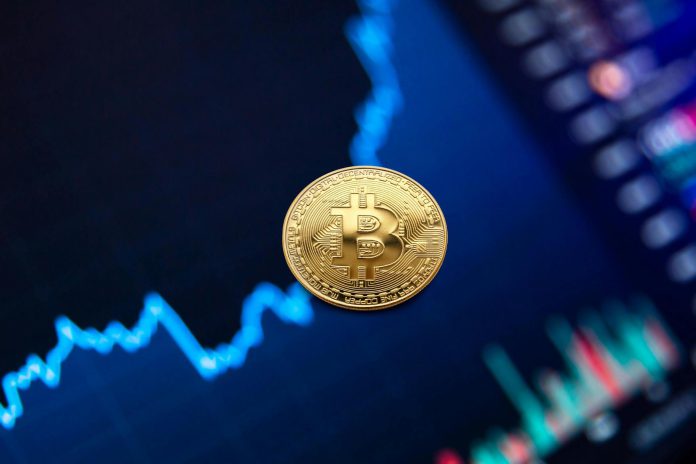Published in cooperation between Binance and The Pajaronian
BlackRock has been reported to have bought more crypto assets in Q3 2025, adding an impressive $22.46 billion to its crypto portfolio, which is nonetheless shocking in the context of the financial world. This colossal growth does not only indicate the asset manager’s confidence of the digital assets but also indicates a wider institutional move in the perception of crypto, as an asset that is viewed as a speculative asset but as the part of a core portfolio. BlackRock’s increasing activities in the crypto industry are not a one-off situation, but part of a larger narrative of traditional finance giants becoming increasingly influential in defining the future of decentralised finance.
Although retail investors have been essential stakeholders in the crypto market since its inception, institutional adoption has always been viewed as the key to mainstream legitimacy. With the recent step of BlackRock, the debate has shifted to whether institutions will embrace crypto to the extent that they adopt it. These seismic capital flow shifts have been directly mirrored in the boom in crypto coin prices across primary tokens such as Bitcoin, Ethereum and Solana and Binance is playing a key role in deploying this capital, trading it and storing it, which has been central in many cases.
The Strategy of BlackRock: Exposure to Influence
The $22 billion growth of BlackRock is not just a portfolio modification any more, but a strategic move to gain power in the new digital asset realm. Having a deep history in the ETFs, derivatives and fixed income, BlackRock has gradually shifted to cryptocurrency-based instruments, such as exchange-traded funds that track Bitcoin and Ethereum. The company is finding that a growing portion of its exposure to these assets is directed by both custodial and non-custodial offerings, several of which also connect or scrape platforms such as Binance, which continues to be a key player in global crypto liquidity.
It is not only an issue of owning crypto, but also about determining how it is acquired, traded and governed. BlackRock is prominent and influential enough, and its entry into the crypto market could shock the entire ecosystem. Other institutional players monitor the decisions that the firm makes concerning custody providers, regulatory jurisdictions and asset allocation models. Indeed, the fact that they trust they are investing billions more in digital assets is a significant market signal: Crypto is not on the periphery.
Binance: An Institutional Liquidity Player
Although BlackRock exists in the traditional finance sector, it also continues to enter the business of systems like Binance, which offer infrastructure for trading digital assets in the modern world. Binance has established itself as an essential part of the crypto economy, serving both retail and institutional customers, not only in trading futures and spots but also in launch pads, staking and token analytics.
And it’s here to stay, as Binance Research has highlighted, the exchange will be at the forefront of innovation within the crypto ecosystem: “At Binance, we are committed to fostering a maturing crypto ecosystem where innovation, regulation, and security work hand in hand. Joining the T3+ initiative reflects our dedication to proactive collaboration with industry partners and law enforcement to combat illicit activity in real time.”
For example, it enables a considerable amount of capital to be deployed without introducing a complex or inefficient pricing system. In addition, this early listing of emerging tokens by Binance provides an institution with insight into market sentiment and emerging investment opportunities, which creates a symbiotic relationship between traditional capital and decentralised innovation.
And in a time where crypto is in a battle for capital against emerging technologies like AI, according to Binance research, this move could be a positive one: “AI vs. Crypto for Capital: A self-reinforcing investment loop in the AI sector, led by NVIDIA, is creating a powerful new competitor for investment funds that might have otherwise gone to digital assets.”
The Market Response: Belief, Not Bullishness
Contrary to the earlier bull run, which was fueled mainly by retail-level speculation, the market’s response to BlackRock’s expansion into cryptocurrencies has been relatively restrained and positive. The bigger coins have bounced back, albeit not with the insane euphoria of either 2017 or early 2021. The rally this time is more grounded and strategic. It is driven by the allocation of balance sheets, decisions of treasuries, and the gradual adoption of crypto into financial products such as pensions and encryption exchange funds.
The market maturity of crypto is evident in the tools offered to institutions. Institutional-grade APIs of Binance have been developed to support complex risk management products, an infrastructure that can sustain billions of inflows without collapsing under pressure. This is a complete contrast to the initial days of crypto, when shallow order books and high volatility were the norm. As platforms like Binance constantly evolve and adjust to institutional demands, confidence is now replacing hype as the primary force behind the market.
Retail Investor Implications
To the ordinary investor, the move by BlackRock sends a powerful message: the game and business are being changed. Retail traders no longer compete with one another; they now exist in an area shared by billion-dollar players who bring different strategies, time frames and information availability. This, however, should not be viewed as a drawback. Institutional adoption, in most cases, assists in stabilising the market, enhancing transparency and legitimising assets before regulators.
The improved tools and access points, resulting from institutional demand, can also be made available to retail investors. One example is Binance, which has been improving its user experience by adding institutional-quality charting, data feeds and compliance improvement. With the exchange having a large number of users, retail users will now have access to more robust services than they had in the past.
And as things stand for retail investors, as of Oct. 10, Binance Research notes that the crypto industry is in a solid place, outperforming traditional equities: “Despite the U.S. government shutdown, the total crypto market cap recovered to over U.S. $4T, with Bitcoin and Ethereum both rising about 4 percent to 5 percent and outperforming traditional equities.”
An Experiment in Integration
BlackRock crypto holdings are no longer an experiment but a statement. The distinction between Wall Street and Web3 is becoming unclear as traditional finance transitions to decentralised assets. Cryptocurrency markets such as Binance are the core of this change and they provide a crossing point between old money and new technology. Vouching, or more likely, the future of the road may involve additional institutions following the same steps, greater regulatory understanding, and a more mature, differentiated crypto market.
Finally, the $22 billion growth in crypto holdings at BlackRock is not just a matter of time in the market. It is a tactical rebranding of the future of finance, with crypto at its core. With institutional heavyweights and platforms like Binance still establishing themselves as defining features of this emerging scene, one thing is clear: the crypto market of tomorrow will be very different from what it has been.












